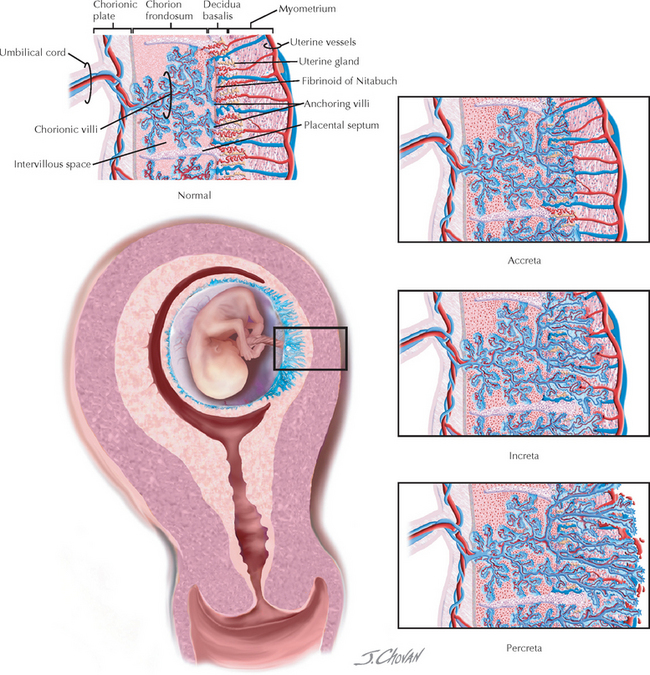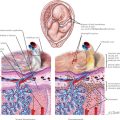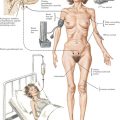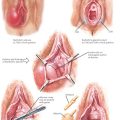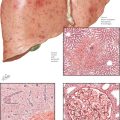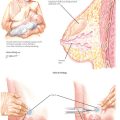Chapter 194 Abnormalities of Placental Implantation
INTRODUCTION
ETIOLOGY AND PATHOGENESIS
DIAGNOSTIC APPROACH
MANAGEMENT AND THERAPY
Nonpharmacologic
FOLLOW-UP
Silver RM, Landon MB, Rouse DJ, et alNational Institute of Child Health, Human Development Maternal-Fetal Medicine Units Network. Maternal morbidity associated with multiple repeat cesarean deliveries. Obstet Gynecol. 2006;107:1226.
Abbas F, Talati J, Wasti S, et al. Placenta percreta with bladder invasion as a cause of life-threatening hemorrhage. J Urol. 2000;164:1270.
American College of Obstetricians and Gynecologists. Placental pathology. ACOG Committee Opinion 102. Washington, DC: ACOG, 1991.
American College of Obstetricians and Gynecologists. Guidelines for diagnostic imaging during pregnancy. ACOG Committee Opinion 299. Obstet Gynecol. 2004;104:647.
American College of Obstetricians and Gynecologists. Postpartum hemorrhage. ACOG Practice Bulletin 76. Obstet Gynecol. 2006;108:1039.
American College of Obstetricians and Gynecologists. Endometrial ablation: ACOG Practice Bulletin 81. Obstet Gynecol. 2007;109:1233.
Ash A, Smith A, Maxwell D. Caesarean scar pregnancy. BJOG. 2007;114:253.
Booher D, Little B. Vaginal hemorrhage in pregnancy. N Engl J Med. 1974;290:611.
Breen J, Neubecker R, Gregori C, Franklin J. Placenta accreta, increta and percreta. Obstet Gynecol. 1977;49:43.
Clark SL, Koonings PP, Phelan JP. Placenta previa/accreta and prior cesarean section. Obstet Gynecol. 1985;66:89.
Clark SL, Phelan JP, Yeh SY, et al. Hypogastric artery ligation for obstetric hemorrhage. Obstet Gynecol. 1985;66:353.
Cotton DB, Read JA, Paul RH, Quilligan EJ. The conservative aggressive management of placenta previa. Am J Obstet Gynecol. 1980;137:687.
Cox SM, Carpenter RJ, Cotton DB. Placenta percreta: ultrasound diagnosis and conservative surgical management. Obstet Gynecol. 1988;72:452.
Morison JE. Placenta accreta: a clinicopathologic review of 67 cases. Obstet Gynecol Annu. 1978;7:107.
Oyelese Y, Smulian JC. Placenta previa, placenta accreta, and vasa previa. Obstet Gynecol. 2006;107:927.
Price FV, Resnik E, Heller KA, Christopherson WA. Placenta previa percreta involving the urinary bladder: a report of two cases and review of the literature. Obstet Gynecol. 1991;78:508.
Read JA, Cotton DB, Miller FC. Placenta accreta: changing clinical aspects and outcome. Obstet Gynecol. 1980;56:31.
Teteris NJ, Lina AA, Holaday WJ. Placenta percreta. Obstet Gynecol. 1976;47:15S.

